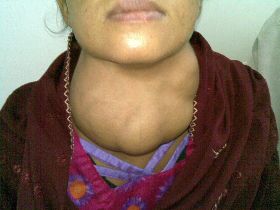
Implications - The hard truth and what we'll lose
 The climate seems to be shifting towards the warmer end of
the thermometer. This seems to be having a negative effect on
the northern Atlantic. Because so many types of algae are so
sensitive to climate change, as you have read on this site, they
tend to not be able to reproduce. So is the case with
bladderwrack. Bladderwrack, along with other organisms, has been
declining in distribution not only because of stress from
climate change, but also because of
eutrophication, caused by
humans, which fortunately, is preventable.
The climate seems to be shifting towards the warmer end of
the thermometer. This seems to be having a negative effect on
the northern Atlantic. Because so many types of algae are so
sensitive to climate change, as you have read on this site, they
tend to not be able to reproduce. So is the case with
bladderwrack. Bladderwrack, along with other organisms, has been
declining in distribution not only because of stress from
climate change, but also because of
eutrophication, caused by
humans, which fortunately, is preventable.
Without many of these organisms, especially bladderwrack, marine ecosystems can change drastically. To learn more, and to find out how you can help this cause, you can visit multiple websites. You can find all the links to these sites at the Baltic Sea Portal.
Once again... Who cares about a Brown Algae?
This website was created for a class with the overall theme
of medicinal
organisms. Most people wouldn't think
of a brown algae such as Fucus vesiculosus as an organism
that can be used to treat any disease a human has. Most would associate more infamous plants such as the
Opium Poppy, or one
that has been in the news more recently,
Ginkgo biloba (ginseng), as
medicinal organisms. But F. vesiculosus has plenty of
potential for future cures, as well as being a current treatment for
a few diseases and ailments.
 Bladderwrack
has quite a few medicinal uses. The main use is to cure goiters.
Goiters occur when the body does not have enough iodine for
the thyroid gland to function. As a result, the thyroid gland
enlarges, and forms a very large lump on the neck. The person in the
picture to the left has an extremely large goiter, you can see why
people would want to cure this as quickly as possible. Bladderwrack
contains quite a bit of iodine in it, but the levels can differ from
organism to organism. The primary way that people take bladderwrack
to cure their iodine deficiency is in the form of a pill bought from
supplement stores.
Bladderwrack
has quite a few medicinal uses. The main use is to cure goiters.
Goiters occur when the body does not have enough iodine for
the thyroid gland to function. As a result, the thyroid gland
enlarges, and forms a very large lump on the neck. The person in the
picture to the left has an extremely large goiter, you can see why
people would want to cure this as quickly as possible. Bladderwrack
contains quite a bit of iodine in it, but the levels can differ from
organism to organism. The primary way that people take bladderwrack
to cure their iodine deficiency is in the form of a pill bought from
supplement stores.
Another reason why we should care about declining distribution is because scientists may have found the reason why east-Asian women have significantly lower rates of ovarian cancer: higher intake of algae due to their diets. So, because of this, research has been done to find a possible link between taking bladderwrack as a supplement and lowering the possibility of getting ovarian cancer. Through these experiments, scientists have also found that bladderwrack may have the ability to stabilize women's irregular menstrual cycles, but more research needs to be done in clinical trials to further substantiate this link.
Research has also been done on a number of other compounds that
are found in bladderwrack that may be used for treatments of other
ailments. There is potential for bladderwrack as an aid in weight
loss, speeding up a person's metabolism to increase the amount of
calories burned in a day. Bladderwrack also produces a compound
called squalene that may be used as an antimicrobial to fight off
infections.
You scream, I scream, we all scream for Ice Cream!
A slightly less important, however much more tasty use for
bladderwrack, is its use in thickening many processed foods that
people with a sweet tooth just couldn't live without. Bladderwrack
produces a compound called algin that is used in thickening foods
like pudding and ice cream, along with salad dressings as well.
Without algin, not only would ice cream be not as rich, but it would
not freeze as uniformly as it does now, as algin aids in this
process.